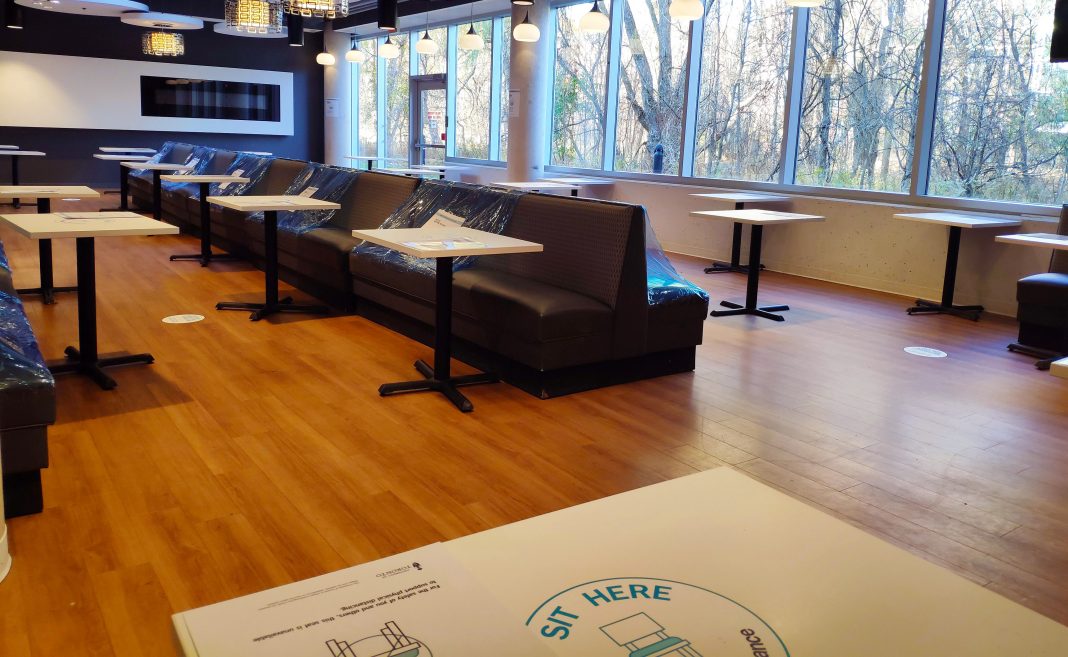On November 7, businesses across the Peel region have resumed operations after being put on hold on October 11 due to the emergence of a second Covid-19 wave. This month-long closure was initially anticipated to last a week. However, the increasing rates of Covid-19 cases in the region caused the government to delay indoor facilities’ reopening.
In an attempt to face the second wave effectively, the Ontario government has established a new system for assessing and classifying the urgency levels of Covid-19 across regions.
“We’re implementing an early warning system with clear criteria to help inform [the public] when restrictions should be tightened or loosened on a regional basis,” announced Ontario Premier Doug Ford in a press release on November 3.
Premier Ford stated that the new system was approved by a group of public health officers, including the chief medical officer of health, and will help provide regional governments with a much clearer understanding of the crisis at hand.
“This planning framework provides structure,” continued Ford. “It will help inform decisions on a regional and province-wide public health measures based on the data we’re seeing.”
The updated framework will no longer be divided into three stages and is instead made up of five different colour-coded levels. Ordered from least to most severe, the levels are green (prevent), yellow (protect), orange (restrict), red (control), and gray (lockdown). Case numbers and positivity rates in each region will be reassessed and updated every week.
The green level is similar to the Stage Three classification in the former system. In order for a region to be labelled “green,” health units in the area must observe less than 10 cases per 100,000 people. Regions identified as green will observe fewer restrictions and businesses remain open, given that they follow social distancing measures and limit the number of customers allowed indoors.
Similarly, the yellow level will allow businesses to continue operations. Still, residents will be required to adopt additional cautionary regulations, such as wearing masks at all indoor recreational establishments and providing contact information. Yellow regions will have between 10 and 39.9 cases per 100,000 residents.
Areas with cases between 40 and 99.9 per 100,000 will be classified as orange. This level is anticipated to enforce restrictions on indoor and outdoor gatherings while also limiting operating hours for local businesses.
Any region with more than 100 weekly confirmed cases per 100,000 would be categorized under the red level, which is the last stage before a complete lockdown is enforced. Recreational facilities such as movie theatres and gyms will be forced to closed, and all other indoor events will be limited to 10 people.
On November 6, it was announced that the Peel Region would be classified as a red level region due to a large number of Covid-19 cases in the area. The case reports published by the regional government display a very distressing increase, and the case count in November is higher than it has ever been.
While a majority of the confirmed and probable cases were reported from the city of Brampton, Mississauga holds the second place for most Covid-19 cases in the Peel region and the first place in the death count. There are currently 6,698 cases in Mississauga. While 5,595 of them have recovered, 239 individuals have lost their lives due to the virus.
With more and more regions classifying as red zone areas, Mississauga will likely face another lockdown. In a press conference on November 12, Dr. Lawrence Loh, the medical officer of health for the Peel region, stated that barring a sudden decrease in case count, the region can expect lockdown measures to be put into place.
An update on the Peel region’s status within the Covid-19 response framework and whether or not residents will enter another lockdown will be released on November 27 on the Region of Peel website.
While we are all excited for the pandemic to come to an end and returning to our everyday lives, it is essential that during a viral outbreak, such as Covid-19, we consider our actions and decisions to avoid fatal consequences.
“As a province and as a country, we’re grappling with a new reality, and it’s becoming more and more clear that Covid-19 will be with us for a while,” stated Premier Ford. “It is why we remain vigilant. It is why we continue to adapt. We continue to plan for the long game, and today we’re taking an important step forward.”



